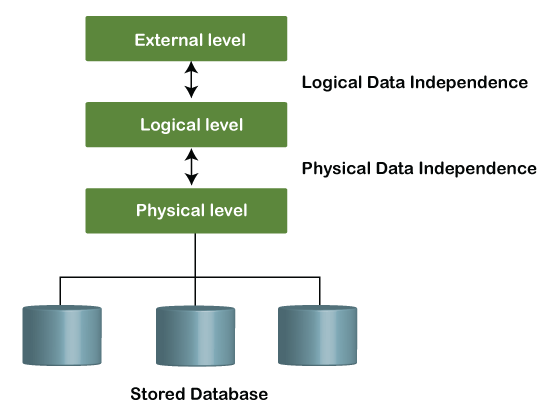DBMS Data Independence: Logical and Physical
Data Independence in DBMS: Data independence is a concept of DBMS which alters the schema of the database at one level of the database system without altering the schema definition of same database at the next higher level. It helps the users by improving the quality of data. By using data independence, there is no need to modify the data structure in the application programs.

In the Database Management System, data independence is of two types:
- Logical Data Independence
- Physical Data Independence
Logical Data Independence
Logical Data Independence is a term that changes the schema at the conceptual level without having to modify the external level or application program. The external or user view would not be affected when there is any change in conceptual view data.
This data independence is mainly used for separating the external schema from the schema at the conceptual level. Modifications at the logical level are compulsary when there is any modification in the logical structure of the database.
Following are the examples of logical data independence, which will not affect the external or user view:
- We can easily break the existing record into more than two records.
- We can also combine the two records into one.
- We can easily modify, delete or insert the attribute.
Physical Data Independence
Physical Data Independence is another type of data independence that alters the schema at the internal/ physical level without having to alter the schema at the conceptual level. The conceptual structure of the database systems will not be affected if there is any modification in the storage size of the database.
This data independence is mainly used for separating the internal schema from the schema at the conceptual level. As compared to the above data independence, this data independence can be achieved easily.
Following are the examples of physical data independence, which will not affect the conceptual view:
- We can modify the indexes in the database system.
- We can easily modify the data structure, which is used for storage.